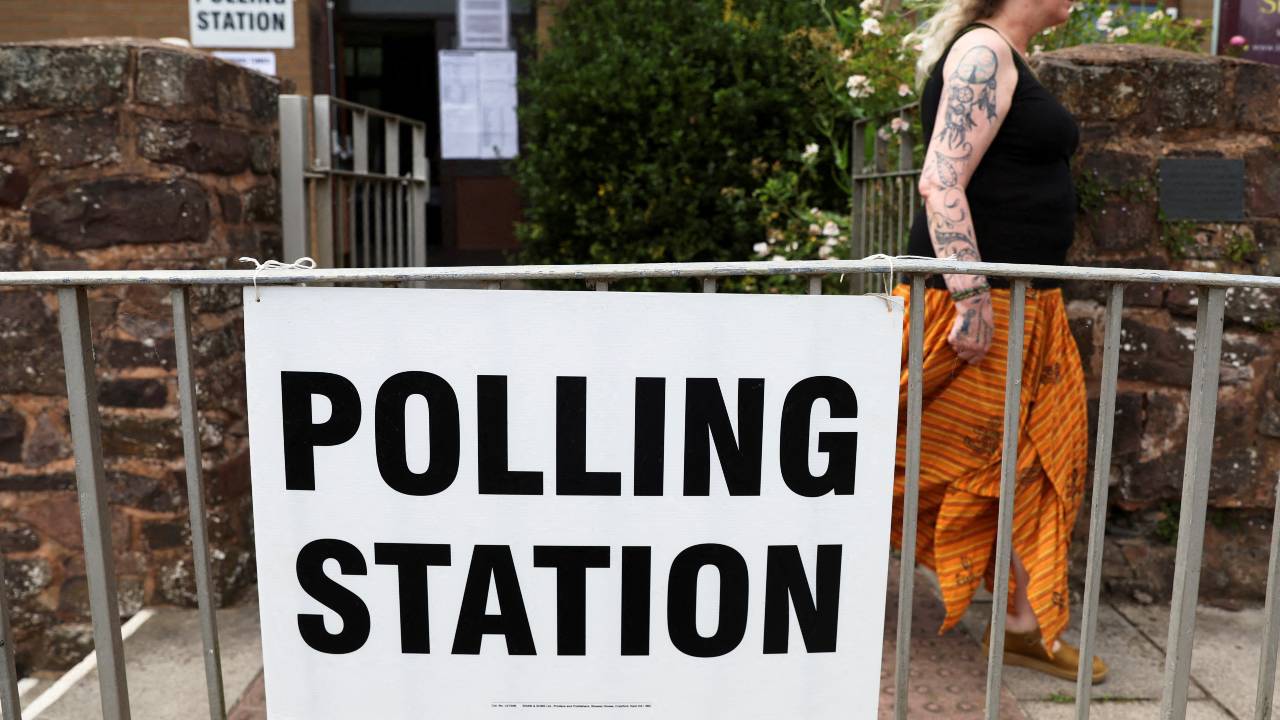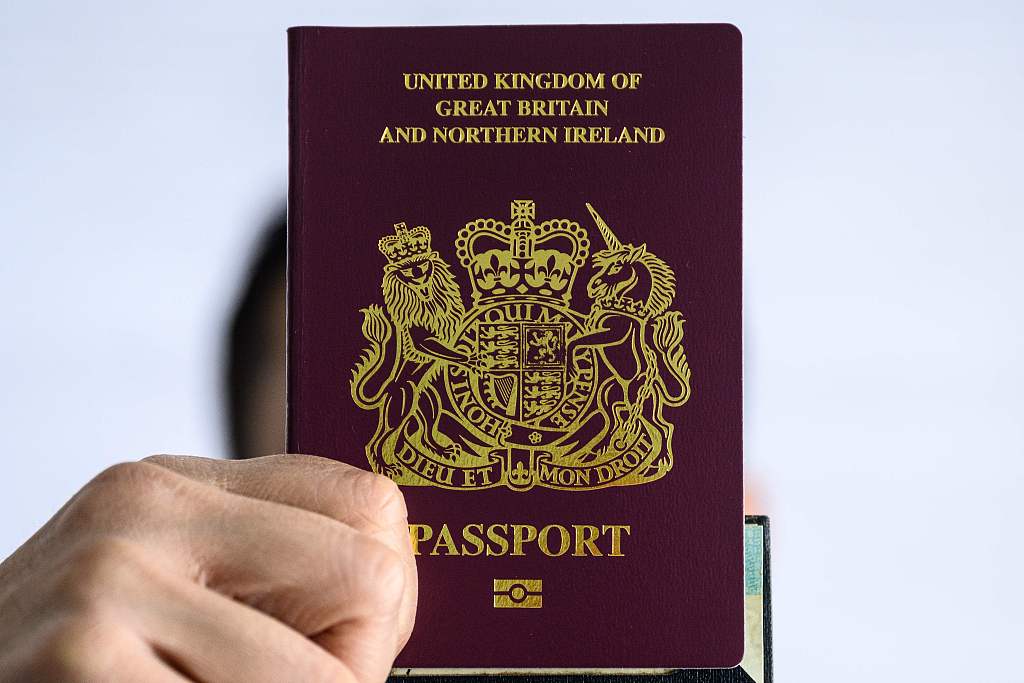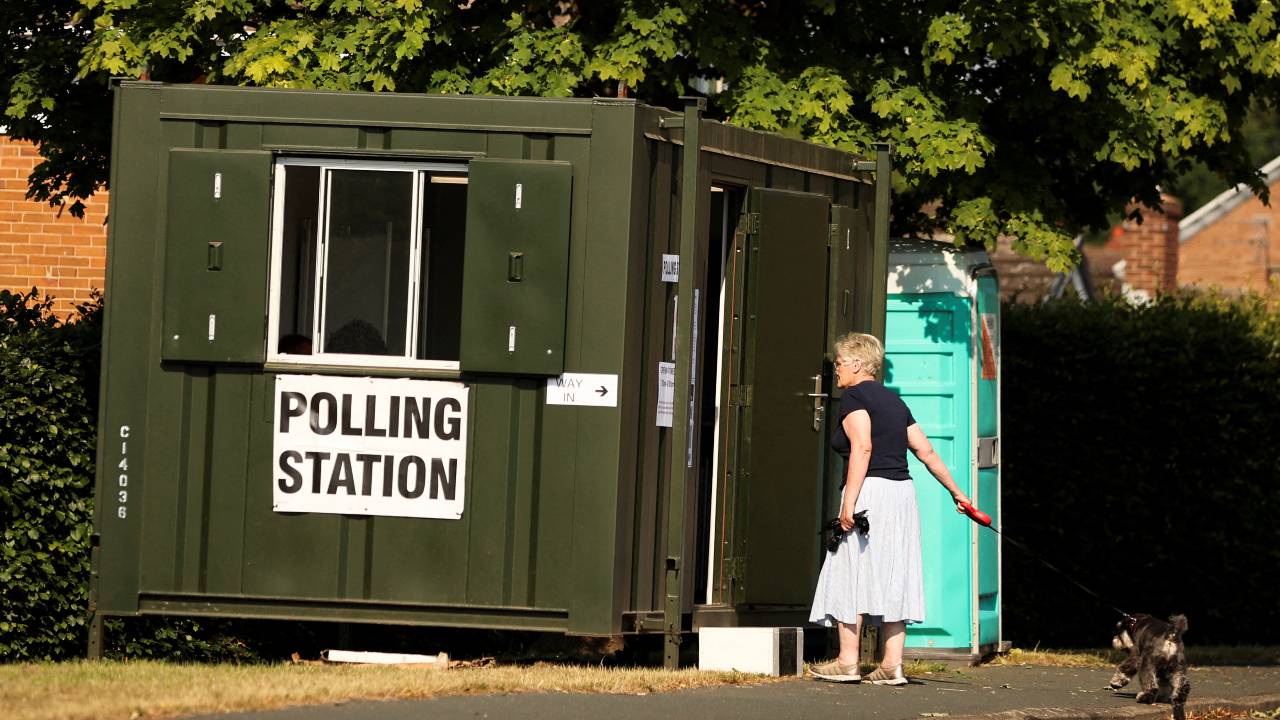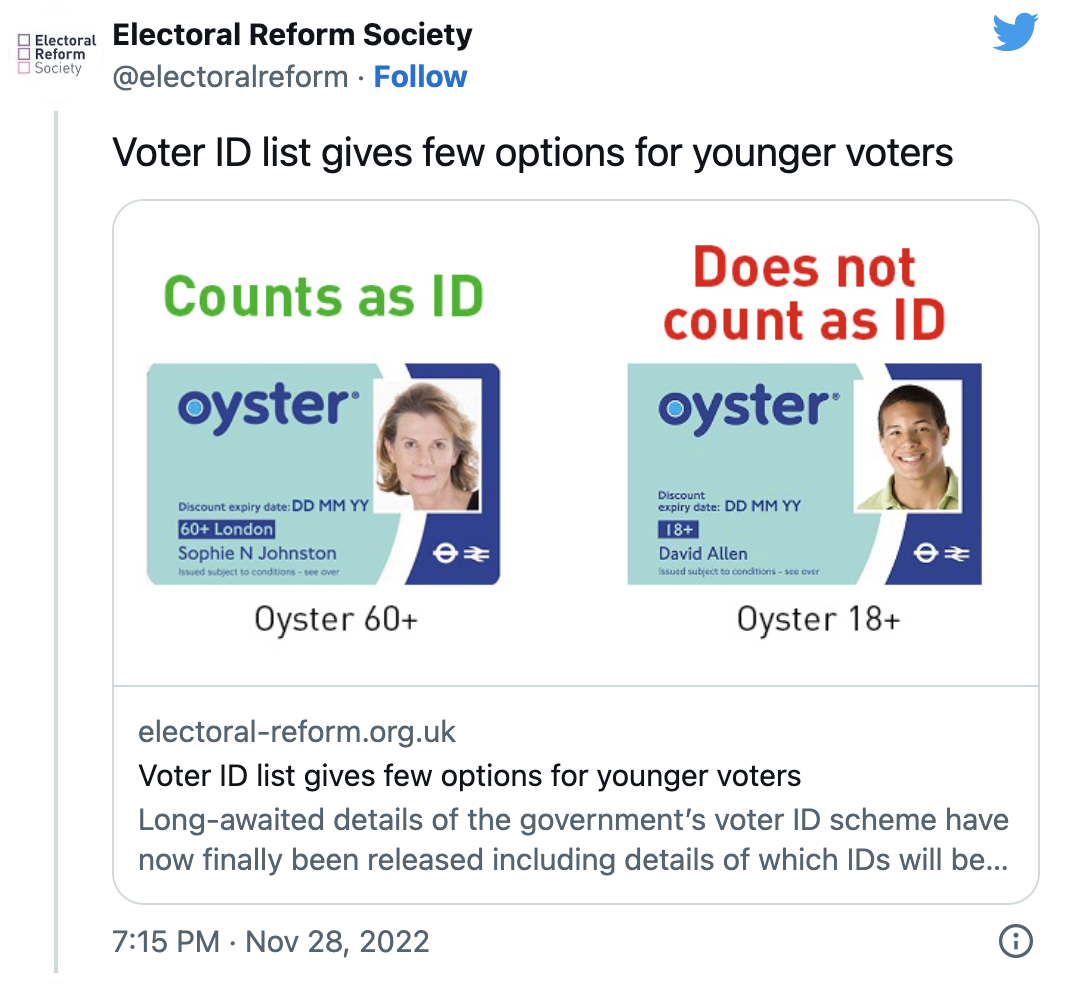
Voter ID has been trialed several times in local English authorities since 2018. /Paul Childs/Reuters
Voter ID has been trialed several times in local English authorities since 2018. /Paul Childs/Reuters
Voters in England will for the first time ever have to show a photo ID if they want to vote in Thursday's local elections.
Although the practice is fairly normal in Northern Ireland and many mainland European countries, critics have accused the Conservative government of introducing the system in a bid to stop millions of people from voting, with some going so far as to call it a "blatant attempt to rig democracy."
Here's what the new requirements involve, what could go wrong on the day, and why voter ID is considered so controversial in the UK.
What it involves
Voters will have to show a photo ID in order to get their ballot paper at polling stations.
This is now an official requirement for local elections, parliamentary by-elections and police and crime commissioner elections.
Starting in October, this will also be the case for all future UK general elections. The one exception is for those choosing to vote by post.
Such a system has been trialed several times in local authorities since 2018, with the British Cabinet Office calling the pilots "a success."
But the UK's Electoral Commission, which sets the standards for how elections should be run, has been more cautious.
After trials in 2019, it said: "Important questions however remain about how an ID requirement would work in practice, particularly at a national poll with higher levels of turnout."
What kind of ID can you use?
Voters will be able to use passports, driving licenses, Older or Disabled Person's bus passes, Transport for London's Oyster 60+ travel cards, as well as out-of-date IDs, providing that you look the same.
The government has proposed that people with paper driving licenses swap them for a photocard, while those over the age of 60, who are disabled, or registered blind or partially-sighted can apply for a photocard travel pass.

Voters will be able to use passports, driving licenses and other photo IDs. /CFP
Voters will be able to use passports, driving licenses and other photo IDs. /CFP
Those who don't fall within that bracket – people without a photo ID, or those who no longer look like the picture on their ID – had the chance to apply for a new voter ID card called a Voter Authority Certificate.
However, the deadline to do so expired on April 25, and government figures show that just under 89,000 people applied for the certificate before the deadline – about 4 percent of those without the correct ID.
What are the reasons the government says it's doing this?
The rationale behind the measures, the government said, was "to strengthen the integrity of the electoral process" and stop voter fraud.
However, there are relatively few occurrences of people trying to steal votes in the UK.
According to the UK's Electoral Commission, there has been "no evidence of large-scale electoral fraud," with just 1,386 cases since 2018. Only nine cases led to convictions.
And in the UK's last general election year, 2019, there were only 33 allegations of impersonation at the polling station from more than 32 million votes cast.
Why is it controversial?
Critics have accused the Conservative government of introducing the system in a naked bid to suppress voter turnout.
While the majority of UK voters have some form of photo ID, roughly 2.1 million people don't have any form of photo or recognizable ID.
These voters, according to government-commissioned research, tend to come from more economically disadvantaged groups, and disproportionately include people with disabilities, the unemployed, those without qualifications, and those who have never voted before.

Research shows those most affected come from marginalized and low-income backgrounds. /Phil Noble/Reuters
Research shows those most affected come from marginalized and low-income backgrounds. /Phil Noble/Reuters
Head of campaigns at the Joseph Rowntree Foundation, Daisy Sands, pointed out that low income would-be voters in the UK were already less likely to take part in elections.
"We should be encouraging people to vote, not making it more difficult," she said.
A report compiled by British MPs also showed that ethnic minorities and trans people – often due to a change in their appearance – were among the groups likely to be impacted by the new system.
"Trans people may have driving licenses with out-of-date names or gender markers, or with old photographs," said Cleo Madeleine of Gendered Intelligence. "As a demographic we also tend to be lower income and to suffer disproportionately from housing insecurity."
Prime Minister Rishi Sunak has pushed back against such criticisms, saying the change would ensure a "high integrity" voting process and that the small numbers affected had been offered the chance to apply for voter ID.
But with such a small fraction of those people signing up for this, opposition poiliticans are crying foul.
Some have accuses Sunak's ruling Conservatives of aping tactics from the U.S. Republican party, using allegations of voter fraud to tighten voting requirements, thereby intentionally stopping people who traditionally back left-leaning parties from taking part in elections.
READ MORE
Germany's Turks vote in Türkiye elections
Butt out: Cigarette pollution in Lisbon
EU living in 'fragile financial world'
Although voter ID may streamline the electoral system in countries that enforce mandatory identity cards, like many mainland European nations, the UK and the U.S. do not require its citizens to do so.
In these nations, the richer you are, the more likely you are to have a photo ID – and therefore more likely to vote for economically conservative parties.
This has led many on the British left to accuse the Conservatives of hard boiling flaws into the democratic system.
Labour's deputy leader Angela Rayner said in The Guardian that the new system was a "blatant attempt to rig democracy in the favor of the Conservative party."
Such allegations in the UK have specifically criticized at the decision to allow pensioners – who traditionally vote Conservative – to use their bus passes, while students – who tend to vote Labour – are not allowed to use their travel cards.

Campaigners have criticized what they see as unfair implementation. /ERS/Twitter
Campaigners have criticized what they see as unfair implementation. /ERS/Twitter
British trade unions were among those to campaign against voter ID on the grounds that it interfered with British democracy.
In the run up to its introduction, David Arnold, policy officer for the British union UNISON, called the new requirements a "blatant piece of voter suppression," saying that the government shouldn't be allowed "to get away with this latest threat to our democracy."
Beyond an alleged deficit of democracy, the government estimates the new scheme will cost up to £180 million ($226.4m) extra per decade.
What are the rules in other European countries?
As many European countries have compulsory identity (ID) cards, these are frequently used in voting. In France, you must prove your identity with an ID card or passport. The documents to be presented differ depending on whether you vote in France or abroad.
Voters in Germany must provide ID if requested, while in Greece voters are expected to present their ID cards.
Across the Nordic countries from Iceland to Finland, ID is necessary, usually via ID card, passport or drivers' license. Sweden will let you present your ID from the Swedish Tax Agency, and will also let you vote if a fellow voter (with ID) will vouch for you – an exemption also granted in Luxembourg.
In Hungary you need to present your ID card, plus your "address card" so they can verify that you are in the right polling location. Italy requires a photo ID (ID card, driver license or passport) and the Tessera elettorale voter card.
Voters in the Netherlands must present a passport, driver license or ID card, including one that has expired by up to five years.
Switzerland requires ID card or passport, but is experimenting with online voting in some cantons. Again, this has been criticized in some quarters – both for the increased possibility of voter fraud, which the UK's new ID requirement is designed to thwart.
What could go wrong for the UK?
Firstly, there are the practical issues associated with the new system. Poll workers will now have the additional task of matching passports with old photos to their owners and driving licenses that are still in voters' maiden names.
The Local Government Association, which represents local authorities, says such difficulties around enforcing ID checks on polling day "should not be underestimated."
There has also been concern that not enough people know about the changes to the rules. The Electoral Commission has said awareness had risen from 22 percent in December to 76 percent in March. But that still risks millions turning up to the polls without the correct documents.
Extra staff will be deployed at some polling stations, the Commission said, but local government representatives have warned that staff could be "overwhelmed" and face abuse from voters that have been turned away.
Then there's the accusation that the government hasn't done enough to tell people about the changes to the system, and in some instances, have actually misinformed the electorate about the new rules.
In one case, Conservatives in the English city of Norwich were forced to admit they had incorrectly informed voters that they did not need photo ID to vote in next week's local elections in England.
However, local elections in England usually have a very low turnout – in 2021 barely more than a third of the electorate turned up to vote. That should make teething pains easier.
The big challenge will arrive when those numbers skyrocket for the UK's next general election – due by January 2025.
Subscribe to Storyboard: A weekly newsletter bringing you the best of CGTN every Friday
Source(s): Reuters